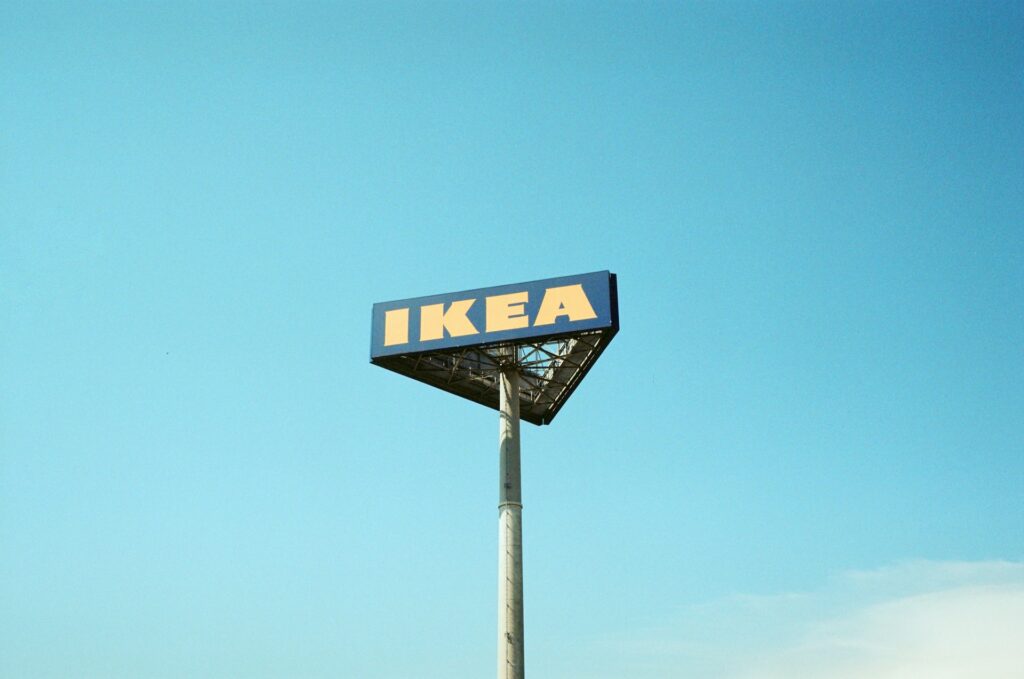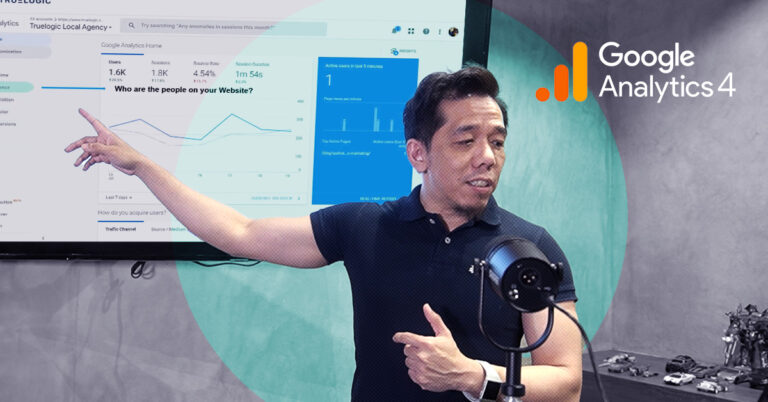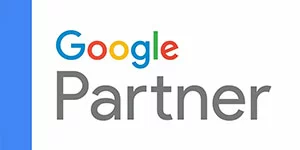Truelogic Episode 55 Recap: The Power of Brand Storytelling

Podcast Transcription
Berns San Juan: Let’s talk about brand storytelling. And to kick us off, let me tell you a story. And stop me if you’ve heard this or feel free to move forward if you have. But in late January, or early February, OpenAI was making waves with ChatGPT. And the much anticipated Google announcement in terms of what they would do to address AI was finally given a date. And the date was Feb 6. So at a Google event, on February 6, in Paris, Google had a PolyGoogle event. Essentially, it wasn’t just about their AI. They talked about all Google products and they announced Bard, their bet on the AI-powered chatbot race. No later than 24 hours, Microsoft unveiled ChatGPT’s coming integration to Bing and the Edge browser, as well as its potential integration into other Microsoft 365 Office Suites.
Suffice it to say, the messaging in the Bing event was very focused. It was well prepared for. They had multiple speakers. Sam Altman of OpenAI was there and it was very focused. They specifically talked about the AI, the Chat AI in Bing, and then as a side note, potentially in other Microsoft tools, but mostly the ChatGPT and Bing’s integration. Whereas the Google event, 24 hours earlier, was sort of like a mess. It was live in Paris, sure, but it talked about Bard and LaMDA. It talked about other Google products. It talked about the Google suite. So it wasn’t very focused. Two days later, when the markets opened, Microsoft gained five points and Google lost about eight, or nine points, wiping out $100 billion in market capitalization. The moral of the story is that stories have consequences.
What is brand storytelling?
Welcome to another episode of the Truelogic DX podcast. And today, we’re going to talk about brand storytelling. So stories have a lot of power. Humans are like we are social animals. And so we are very much influenced by the power of stories, where our perception is our reality. Our buying behaviors are shaped by our feelings, and our behaviors are repetitive. And that’s why brands today invest heavily in crafting compelling stories that resonate with their audience. And this is essentially how they differentiate from everybody in the field. So what I want to do is break down, what brands do to be able to get to that story. And why does it matter? When are your business and when are you a brand? And then how do you craft that story? And then what do you do to bring it to life? And then what do you do to get your customers to tell themselves that story which super matters? So we’ll try to broadly answer all of these questions in today’s episode. So let’s get started.

Product vs. Business vs. Brand
First off, let’s differentiate the difference between a product, a business, and a brand, right? And I will begin, with a product, by saying, let’s differentiate a product and a commodity. A commodity is what the product is at its basic level. So to me, the best explanation of a product, like if there are foreigners that listen to this, you might not understand the contextual relevance of the example I’m about to give. But in the Philippines, there is a location that’s called Divisoria. And everybody knows that if you want the best-priced items if you want the best-priced commodities, you go to Divisoria. You go to 168, right? Like that’s where you will find the cheapest stuff out there. But that’s precisely what it is. They are cheap commodities. The stuff that’s sold in Divisoria are not products, right? They are commodities. Products are what a commodity becomes when it has another characteristic added to it when it has an attribution. So I’ll give you guys an example.
Instant coffee. Nescafe’s instant coffee and a latte from Starbucks are precisely the same commodities. They’re coffee, right? Commodity-wise, they are both coffee. But product-wise, they’re not the same. One is a brewed espresso cup. It’s fresh coffee and then one is instant. That is an attribution and that creates a differentiation between the two products. This is why San Miguel charges a few pesos for instant coffee and Starbucks can charge P150 to P250 per cup of coffee, right? So that is an attribution of a product. Now, both of these companies are brands but stick with me. So commodity, the base product, the product is the commodity with an attribute.
What is a brand story?
Now, let’s talk about the company which is potentially the brand. If your company stands for something, if you’re not just an alternative provider, if there is a story you’re trying to tell, this is where you evolve your company to be a brand. And a brand is essentially all of the experiences, all of the content, all of the collateral, and all of the experiences that your customers will have with your business, your product, your commodity, and your staff. Like that’s it. That’s essentially what comprises a brand, right? And so the goal of every business, to become a brand, is to get customers to tell themselves a story about the brand. If you don’t succeed in doing that, you’re not telling a brand story. So people love brand stories, right?
Because I’m a nerd, I’m going to throw out a couple of stats at you. So take, for example, did you know that 55% of people are more likely to buy a product in the future if they associate a brand story with it? 44% of people will share a story. Take, for example, I cannot count the number of times I’ve shared the Apple brand story, the Starbucks brand story, and the Giordano brand story because I am a fan of all of those brands. So I’m probably part of the 44, but I’m probably the higher outlier because I talk about it all the time. I think brands, like all businesses, have an X percent of first-time converters, probably around 15%. But it is repeat business. It is the gaining of lifetime value that a brand will have over people that commodities. I’ll give you guys an example.
So I probably hit Starbucks about a dozen times a month. There will be worse months, but suffice it to say about a dozen times a month, right? So I’m fairly loyal to Starbucks, but that’s also because I’m not a Gen Z person. So I go to Starbucks fairly about a dozen times. And so that gives me a pretty good lifetime value with the brand. That’s an example. I have had an iPhone since 2008. I have never gone to an Android device. That is, what is that, 2008 to 2023, right? That’s 15 years of loyalty. That’s a lot of loyalty. If you open my cabinets, you guys will see almost only two brands. Fine, I’ll be honest, there will be like four. So you will see an Adidas. You will see Arigato. You will see Giordano. And you will see Uniqlo. And you will have a hard time finding any other brand in my closet. That’s it.
People tend to be very brand loyal or at least older audiences tend to be very brand loyal. And so what it allows you to do is allows you to turn a transaction into a lifetime value customer. Now, if you ask me, when was the last time I was to Divisoria, a decade ago? There is no story. There is no compelling story that brings me back to the location. There is no compelling story that makes me want to. The price value proposition is not a strong enough proposition to make me want to go back to the location. Now and then, I’ll have a very practical need to go there. Like if I’m looking for some very specific niche products or if I’m looking to buy stuff en masse, but for the better part of a decade, I’ve never been there, right? And so that does not create a lot of brand loyalty. Companies with strong brand stories tend to outperform their competitors by about 20%. That was a research that was released by Forbes.

Stories have consequences
To prove my point, I’ll give you guys another story. So many of you guys might be aware because I think they did a terrific job and so I’ll toot their horn a little. I’m so happy that IKEA is in the Philippines. I am super happy that IKEA is in the Philippines. As a Filipino that travels, I wouldn’t say fairly often, but that does a fair bit of traveling. As a Filipino that does a fair bit of traveling, I’ve usually enjoyed getting lost in an IKEA, in Hong Kong, or Singapore. So, to me, it’s a great brand. It’s a great value. When I’m in the Philippines and I want IKEA stuff, I have to buy it from aftermarket or other third-party importers, but never really IKEA the brand itself, which means I’m never really getting the full value of the price. So I’m so glad that IKEA is in the Philippines.
The execution of their brand strategy, like introducing themselves to the Philippine market, in my opinion, in terms of brand storytelling, was terrific. So, the initial ads that IKEA came out with were, “Hello, Philippines, we are IKEA ads.” Right? And the one thing that I loved about the “Hello, Philippines, we are IKEA” is A, it was both faithful to the audience, and it was faithful to the brand. The way IKEA created its marketing collateral is exactly similar to the marketing collateral you would see if you go to another IKEA somewhere else around the world. So that’s first. But if you took a look at the humanized content, like the kinds of models they use, and the kinds of people they had in these photo shoots, they look like your grandma. They look like your mom. They look like your Tito. They look like your cousin. They look like your friends that are married, right? They look like us. The people that they used look like us. And so I thought it was brilliant. And they started their marketing campaign about half a year before ever opening the branch in Pasay. Before they were fully open, they launched a campaign that was called Make Home Count.
Now, here’s the challenge. Now, imagine your IKEA. The challenge for you is you’re entering the Philippine market. We’ve got a very robust population. We are not one of those countries where we are experiencing a demographic decline. There are a lot of young couples, the people that are helping me make this podcast, these guys are married and have kids, right? So there are a lot of young couples with young children in the country. So we are not experiencing a population decline. We are in a ripe market for furniture. So how do you enter a market where there isn’t necessarily one dominant furniture player to topple, but there are multiple disparate brands that sell furniture, right? Like, you’ve got the All Value brand, which sells furniture. You’ve got SM that sells furniture. You go anywhere. Anywhere, everywhere sells furniture. You’ve got BLIMS and so on. And so, what IKEA wanted to do was to associate itself with the Filipino home, right, with the Filipino experience.
And so the Make Home Count campaign I thought was brilliant because remove the term home, but that’s essentially the message. Like, For Make Home Count, remove the term home, and turn that into play. And you make that, Make Play Count. Make sleep count. Right? Like, it was brilliant, which allowed them to point this campaign to any product line that they wanted. It was brilliant. They didn’t just do it in the Philippines. It was through Southeast Asia. But the Make Home Count campaign was brilliant. It was executed brilliantly.
Before the store opened, they released an app that allowed people to have e-commerce experiences with IKEA, which, I think, supported the hype around the opening of the brand. I think it allowed people to have initial experiences with IKEA products. I was there at the IKEA opening. I loved it. So I was there on day one because of FOMO, but it was terrific. I’ve never been to IKEA, by the way, where the lines at the till are not ginormous. The lines are super long. But the bottom line is, IKEA executed the brand storytelling brilliantly, right? Like, they got the message across that everybody, regardless of social status, regardless of economic status, regardless of your income, everybody deserves well-designed, sturdy furniture. That’s their whole concept of democratic design.
How did the Philippine market respond to IKEA and its messaging? IKEA sales in the Philippines grew by 41.2% the following year. I can’t even believe they’ve been here for over two years now, right? But their sales in the Philippines grew by 41.2%. They made over a billion euros in their second fiscal year. It was amazing. So the moral of this story is that stories have consequences.

Elements of a Compelling Brand Story
So how do you get to a brand story? How do you tell a compelling brand story? So, first things first. What I like to tell people is knowing your brand requires two things. It requires knowing who you are and who you serve. Or it requires you, to understand what you are and what problem you solve. Right? Like, so who are you and who do you serve? Or what are you and what problem do you solve? These are the two biggest puzzles for any business to solve.
If you have an answer to this, you are either a brand or you are on your way to becoming a brand. But if you know who you are, who you serve, and precisely what problem you solved, you are well on your way to becoming a brand. If you don’t know the answers to these questions, you cannot create content or you’re going to need a lot of luck. I can’t say you can’t, but you’re more likely not creating content that will wind up being engaging. You will not create audience-centric content because you don’t know who your audience is. You’re probably not going to create content that is emotionally resonant because you don’t understand who you’re talking to or you’re just talking to everybody. And it’s going to be incredibly hard for you to be consistent.
Define your brand
So these are the very important components of creating your brand or identifying who or what your brand is, right? So who are you? Who do you serve? What are you? What problem do you solve?
If you have the answers to that and that’s not super simple, right? That’s not super simple. Figuring out who you require and what voice your brand uses. Take, for example, IKEA is an everyman brand, right? For some reason in the Philippines, they’re still trying to shake off this luxury brand perception. I guess it’s because it’s people like me. Because the people that are familiar with IKEA tend to be Filipinos that are traveled, right? And Filipinos that are traveled tend to be of a better economic status. And I think they’re the ones that are soiling the brand identity of IKEA. But IKEA is for everybody. So IKEA is an everyman brand. What they try to do is they try to serve everybody. They make no distinctions. And the thing with an everyman brand is your emotional hook is value. Like, the value proposition has to be, you’ve got to be affordability is a requirement of an everyman brand. You cannot claim to be an everyman brand. Like, Louis Vuitton can never be an everyman brand. Mercedes will never be an everyman brand. Tag Heuer will never be an everyman brand. Rolex will never be an everyman brand, right?
So everyman brands must have a price point as part of their consideration. So IKEA is an everyman because the value proposition, the emotional hook is accessibility and belonging. So they exclude no one, right? So this is their identity. The sense of belonging and the sense of value is what makes them an everyman brand. So this is the identity they assume. They don’t try to create very complex campaigns. Their language is very down to earth. It’s very straightforward. It’s an everyman brand. Everyman needs to be able to understand their message, right? So IKEA is an everyman brand. They figured that out.
Truelogic, as an example, is a sage brand. We are a teaching brand. And the emotional hook that the emotional hook, the emotional bullseye we try to hit when we talk to prospects when we interact with our clients, is, A, reassurance, and then B, a sense of improvement. So we create a sense of reassurance, like meaning, don’t worry, it’ll work, just give it time. So it’s a sense of reassurance. And then the next one is, it’s a sense of better. So this is why we work on the collateral that our clients get to see, the way we report, the reason we work on all of this is that it aligns with what our identity is. We are a sage brand. We are a teaching brand. Truelogic DX happens because we are a teaching brand, right? Like, could I sell without doing podcasts? Absolutely. Could we sell if I didn’t do podcasts? Could we sell if I didn’t teach at DMI? Could we sell if I didn’t speak at events? Could we sell if we didn’t do webinars? Absolutely. But then that would not be a sage brand, right? If you are a sage brand, you are a teaching brand. And so this is our identity.
Now, IKEA, is hard to nail down, like, audience, right? Because they’re an everyman brand, but even everyman brands will focus their attention on the 20% of the audience that will create 80% of their sales. The same is true for Truelogic. The same is true for Starbucks. The same is true for Apple. So once we’ve identified what our brand voice sounds like, and what our brand archetype is, we then have to create, what are your customer avatars, and who you talk to. Now, I’ll get to the not-sexy bits of the customer avatar, and I recommend brands. Try not to have more than four. I have done marketing intakes. I’ve done interviews with brands that we work with, and sometimes I see 12.. I’ve got a rule. A brand that talks to everyone, talks to no one. A brand that talks to everyone, talks to no one. You must know what you are, who you are, and whose problem you solve, right? Like, whose problem do you solve? Super important.

Crafting your Brand Story
So let’s talk about the not-sexy bits. When you create your customer avatars, their demographics, what their commercial goals are, the practical need for your product or your service, and their BIOs. You indicate the channel, like meaning, where are they most likely to see your content? Are they likely to see your content on trad media, on the radio, on a billboard, out of home, on Facebook, or a Google Ad? Where are they likely to see your content? And then you get to the more sexy bits, right? So demographic, that’s not a sexy bit. The sexy bits are the descriptor of your audience, right? Like, what are the descriptors of your audience? So take, for example, let’s do, millennial marketers, the millennial champions that we rely on to tell their bosses that we’d be a great provider. Great descriptors for them would be the amount of time they spend on social media, and how much research they do. What frustrates them at their job? What makes them look good in their job? And how much of this have they done before? Like, how much vendor selection have they done before? How many times have they been part of that? Right? So these are great descriptors.
Another descriptor that is a must-have, is what I call the goal motivator frustrator. So when we create content, when you create content, remember the emotional bullseyes, where an IKEA and everyman brand is belonging and practicality. And then Truelogic is a sage brand. So we are learning and improving. So it’s betterment and improvement, reassurance and improvement. It is important to know what the goal of that archetype is, or sorry, of that avatar is, what frustrates that avatar, and what motivates that avatar. So the reason I say these is A, you can use all three, but B, one of those three is always more effective than the rest. So one of those three is always more effective than the rest. Take, for example, IKEA, a lot of the messaging is motivational. Like, it’s not goal oriented. Nobody has the goal of, “I dream of owning an IKEA sofa.” That’s not anybody’s goal. So IKEA is very motivation driven. And so this is why the collateral they create is a family having a great time around a dinner table, a family having a great time around a bedroom, a family having a great time around the living room, around the kitchen.
So once you’ve figured this out, give your avatar a name. And then make sure that you create content that is a match for them. I’ll give you guys another great example. You might have seen it. Have you guys seen the ads for the LBC Sakto Pack? That is a very far departure from the old Hari Ng Padala ad. And this time, the target market is and the funny bit is, I’m not sure if this is incidental, but I’m sure it wasn’t that the LBC model there looks like a Korean K-pop person dressed up in an LBC uniform. But look at the audience. It’s a female millennial online seller. Like, look at the change in the demographic. Like, look at the change in the target market. But that’s a great example of a brand knowing who its target audience is, right? So once you know who your target audience is, the better positioned you are to create messaging that is memorable and resonant.

Bringing Your Brand Story to Life
Now, bringing your story to life sounds great, but in reality, it is also a bit of technical work. The way you bring your brand story to life is by having a plan behind it. Now, most brands initially won’t know where to share their stories, and won’t know what kind of stories to create. And so what I’d recommend when we talk to businesses and brands, the conversation that I dissuade people from because we inevitably get it, is, “Oh, you see, my competitor, I want to do something like that.” And I usually tell businesses, “Oh, no, you precisely don’t want to do that.” For no other reason than you are not them, we don’t even know if your target customers are the same, if your value propositions are the same, or if your positioning in the market is the same. So some brands will tell us, “Oh, you see what they do. That’s what I want to do.” And what we tell them is, “Unless we’ve got access to their analytics and see how their users behave, no, that’s probably a bad idea.” It is probably a better idea to take a look at, what you have done so far. Take a look at it, and let’s line up which ones were effective, and then double down on the things that currently work. And then do some experiments on, okay, let’s experiment on this customer avatar in this channel. This customer avatar in this channel, this customer avatar in this channel. Those are all great examples of how you can do testing on your messaging.
By the way, once you’ve picked your customer avatar, once you’ve picked your emotional bullseye, it’s not the Ten Commandments. God did not write it on a stone tablet. You can change it, right? If you realize your users are not behaving according to expectation, your market is not behaving according to expectation, you can change it. You can mature it. You can improve it. You can reiterate it. And the last bit is, once you know who you are and you know who your audience is, the better able you are to tell an authentic story.
And so with that, I’ll end this semi-longish episode of this podcast. So thank you very much for listening to this story. If you have any questions, comments, or topic suggestions, give us a shout-out. You can reach us on YouTube. We are on social media. My team is on social media and check our website for more content. If you’re interested, subscribe to our Spotify, Google, and Apple accounts. Thank you very much to our friends at the Podmachine for powering us. I’ll see you in the next episode.










